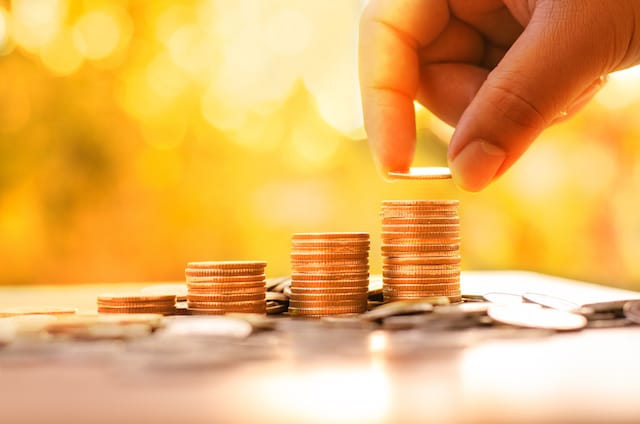Got Your $1,400? Budget Your Stimulus Money Before You Blow it

A third round of stimulus checks is making its way to millions of Americans’ bank accounts, and this time it’s a nice chunk of change.
Individuals making up to $75,000 per year (or $150,000 per year for couples) will receive $1,400 — plus $1,400 for each dependent regardless of age. The payments phase out completely for individuals making $80,000 or more, and couples who earn over $160,000.
That means a middle-income family of four will see a $5,600 windfall.
Before you see that boost to your bank account though, get prepared by planning how you can put the money to best use. Of course, everyone’s financial situation is different, but here are four key things to consider when deciding how to spend your stimulus check.
4 Considerations for How to Spend Your Stimulus Check
1. Cover Your Needs First
If you’re having trouble paying bills or putting food on the table, you should use your stimulus money to cover those basic needs.
Create a bare-bones budget and total up the cost of your absolute essential expenses. Use your stimulus check to supplement where you’re coming up short for the next couple of months. If you’re a couple hundred dollars short every month, with careful budgeting that $1,400 check could provide a needed cushion stretching several months out.
However, don’t wait until you’re in dire financial straits to seek assistance with your basic needs. Contact the United Way’s 211 network, the Salvation Army or your local food bank if you can’t afford groceries or housing.
Your stimulus check could also be well spent on necessary expenses like car repairs or dental work that you’ve been putting off due to lack of funds.
2. Increase Your Savings
If you’ve got stable employment and are bringing in enough money to cover your essential needs, look to using your stimulus check to bolster your emergency fund.
While the typical advice is to have at least three months worth of living expenses in an emergency fund, you might want to bump that to at least six months given the ongoing economic uncertainty created by the pandemic.
Separate your emergency savings from your spending money so you won’t be tempted to dip into your savings. A high-yield savings account will earn interest while your money’s sitting in the bank.
3. Think About Your Future
If your needs are being covered and you have a robust emergency fund, consider spending the money you’ll get from the stimulus bill to set yourself up for a better financial future.
If you haven’t started saving for retirement, your $1,400 put in a Roth IRA today will grow to a nice balance a few decades from now, thanks to the power of compound interest. Of course, you should try to keep adding money every year.
Taking a certification course could position you for a promotion or new job. Alternatively, you could use the money as seed capital to pursue an entrepreneurial path.
Making a dent in your debt or paying a large bill upfront rather than over time could help you save money in the long run.
4. Help Others
If you’re in a financially stable situation with a healthy emergency fund, another good use of your stimulus money could be to help others.
Use the extra cash to help a family member or friend in need or donate to a reputable charity. Or you could spend your money at local businesses and restaurants — or purchase gift cards for future visits.
You don’t have to have a financial surplus, however, to find ways to help others. Donating blood, going grocery shopping for an elderly neighbor or troubleshooting teleworking tech for a friend are all ways you can be of service without spending money.
Nicole Dow is a senior writer at The Penny Hoarder.


















